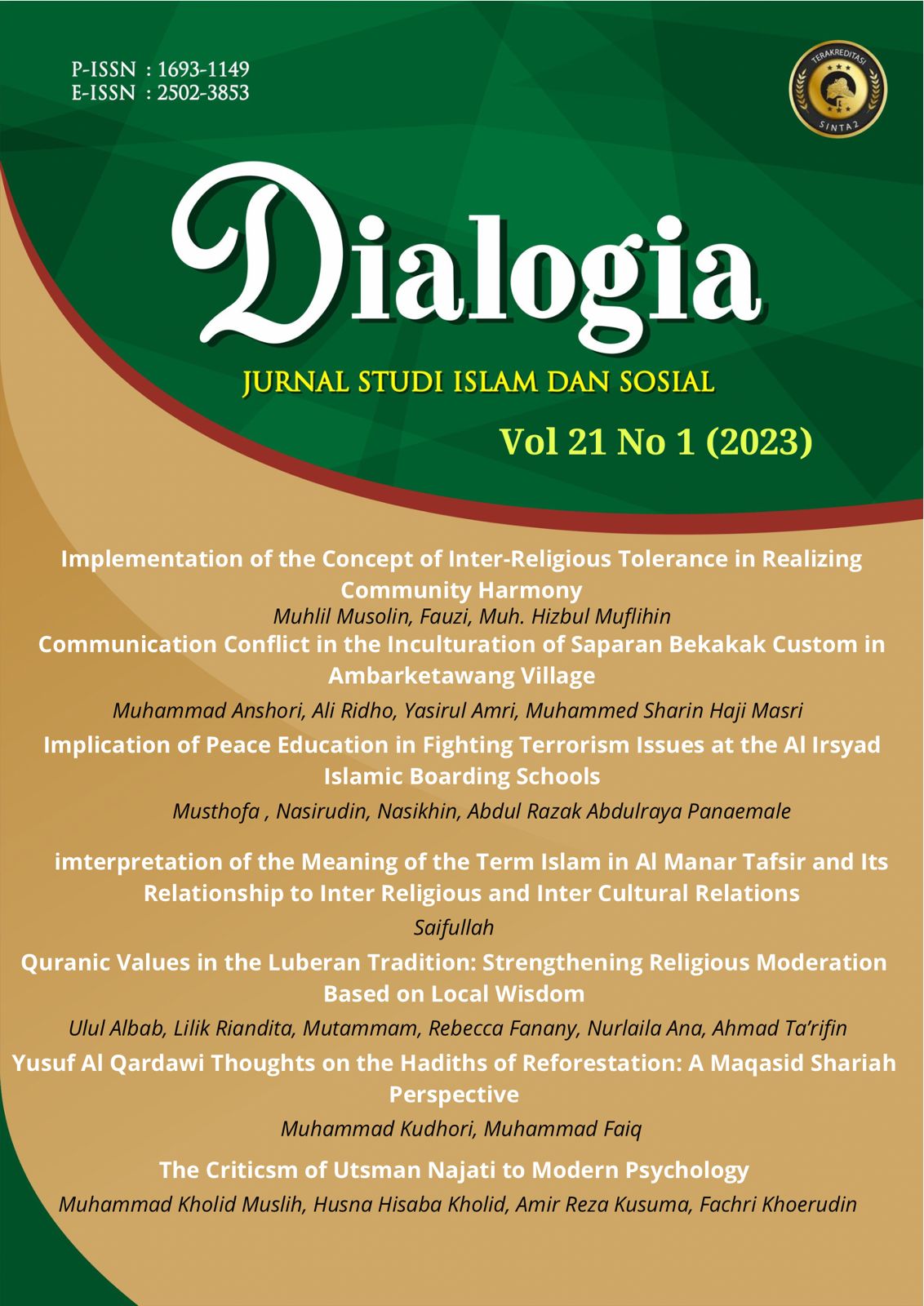Patterns of Chinese Muslim Theological Identity in the Kediri Residency in Post-Reformation
DOI:
https://doi.org/10.21154/dialogia.v21i1.5840Keywords:
Theological Identity, Chinese Muslim, Kediri, Post-ReformationAbstract
This research examines the hidden intentions of Chinese Muslim diversity in the Kediri Residency. The Kediri Chinese Muslims are theologically unique in their social-religious affiliation and religious motives. This study aims to explore the religious practices of the Chinese Muslims in Kediri, their theological features, fiqh references, interpretations, and political affiliations so that the theological characteristics of Chinese Muslims can be identified clearly. This research uses Paul Ricoeur's Critical Phenomenology approach with reflective analysis as the main feature to dissect the intention of awareness of the direction of their religion. The result of this research is that the style of appreciation practiced by Chinese Ethnic Muslims is more directed toward the practical life of religion. PITI provides a space for community-based expression, while Cheng Ho symbolizes unifying the Chinese Muslim ethnicity in Kediri. The spiritual practices carried out are more representative of Sharia and community-based social interactions, paying little attention to the realm of Sufism or Philosophy. The existence of the Chinese Muslim Ethnicity for a long time has significantly impacted the political situation in favor of Indonesia. At the same time, religious affiliation has also significantly impacted the community so that it has a more expansive religious space.







